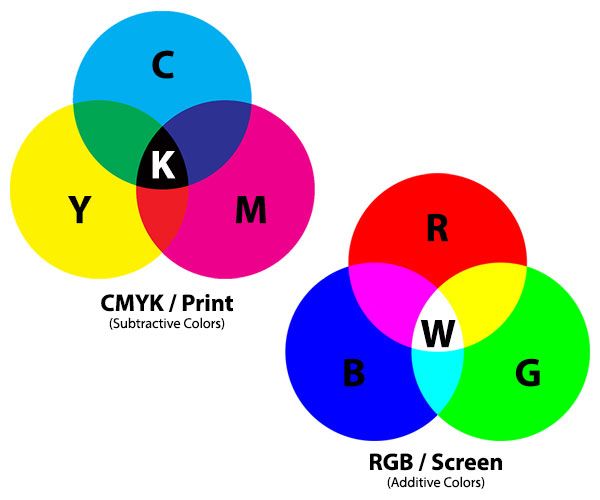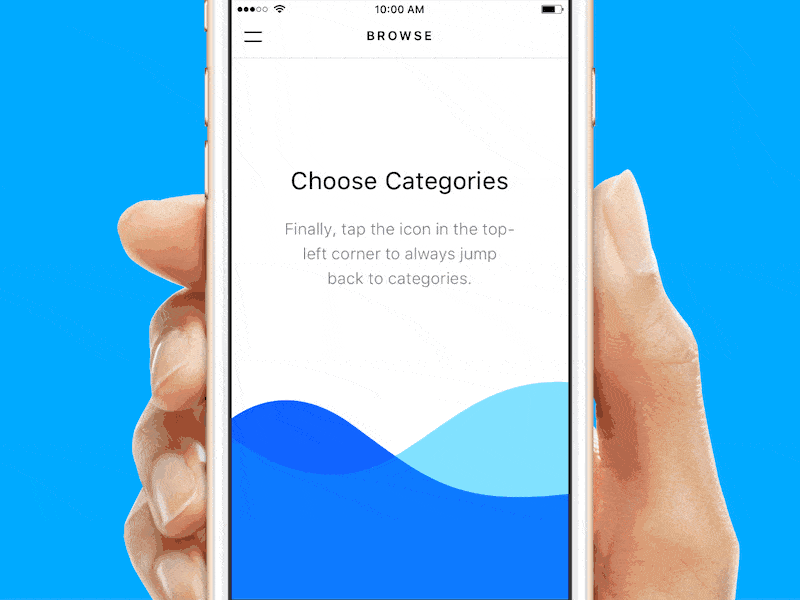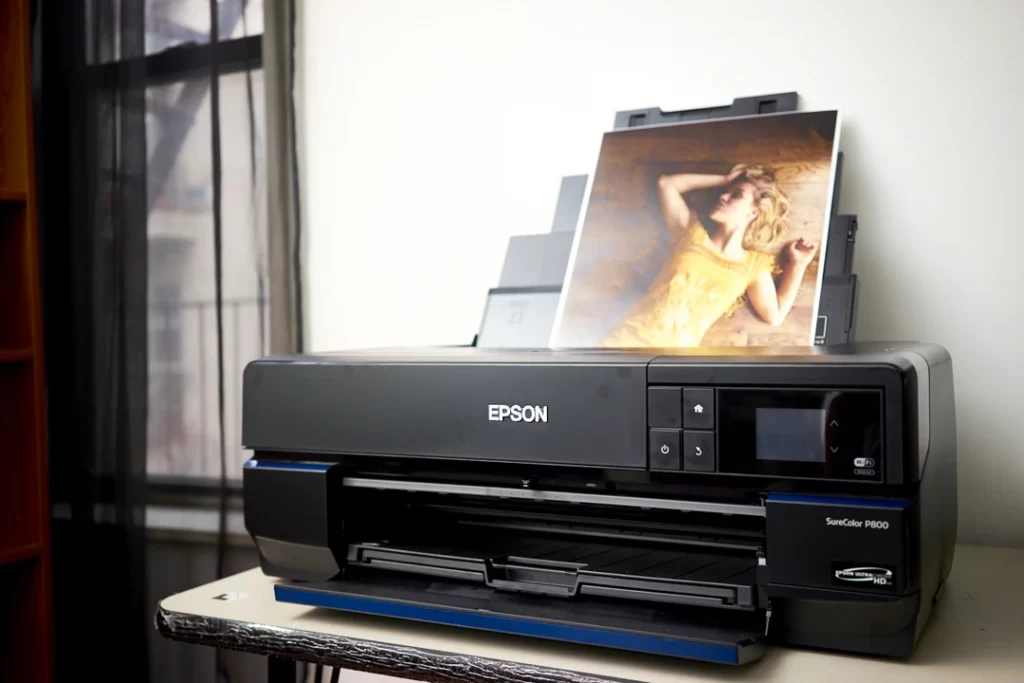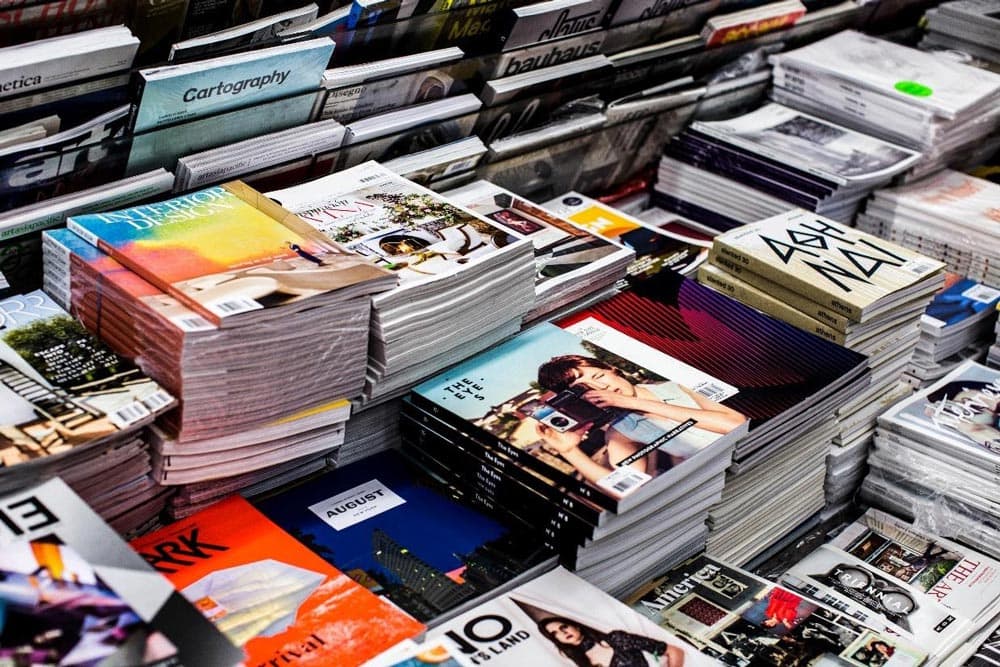Designing For Print Vs Digital: The Differences
The debate between print and digital design has raged for years. What key differences must designers consider with emerging new technologies when creating physical print mediums versus digital platforms? This article will explore designing for print vs digital media, the differences and creative considerations.
File Format & Colour

Print Relies On CMYK, Whereas Digital Uses RGB
One of the first technical differences is file formats and colour spaces. Print products rely on the CMYK (cyan, magenta, yellow, black) colour format. This allows colours to be accurately reproduced through a physical printing press. Meanwhile, digital platforms best utilise the RGB (red, green, blue) format for screen display.
Depending on the specific project, designers may need to convert files from one format to another. Converting from RGB to CMYK often leads to unexpected colour shifts. Certain vibrant hues like neon greens and bright purples don’t translate well. Designers must preview conversions to ensure brand colours are maintained.
Digital Displays Have a Wider Colour Gamut
Monitors and devices used for digital content have progressed to display a massive array of colours. Print can’t always keep up. The total range of reproducible colours is known as a colour gamut. While print gamuts have grown, high-end digital displays exceed what’s currently possible in ink and paper.
This also impacts colour choices during the design process. A vibrant colour on screen may seem duller or muddier in print. Designers should reference printed colour swatches when selecting key brand colours for print and digital use.
Both Use Pantone Matching System (PMS) Colors
However, Pantone Matching System (PMS) colours help alleviate confusion. This standardised colour reproducing system allows specific colours to be referenced. So, Brand Blue can be explicitly defined as PMS 2925 C, with associated CMYK and RGB values. This provides continuity regardless of print or digital output.
Content Structure & Layout

Print Layouts Are More Fixed
Unlike dynamic digital experiences, print layouts remain fixed once produced. There needs to be more room for rearranging or reflowing elements post-production. Designers focus on clear hierarchies through positioning, scale, contrast and whitespace. Immutable layouts also impact page numbering, cross-references, and continuity in multi-page documents.
Digital platforms allow more fluidity. Content can shift and flex to accommodate different devices and orientations. That said, establishing strong visual hierarchies remains vital for scalability and findability.
Print Has Defined Page Dimensions
Print projects have clearly defined dimensions like 8.5” x 11” or A4. Layouts must conform to these boundaries. Digital canvases are more elastic thanks to responsive design. Sites and apps automatically optimise around screens of varying proportions.
Print also has physical limitations like glue margins and gutter spacing where content can disappear. Digital faces fewer hard physical constraints. That extra real estate encourages designers to take fuller advantage of space. White space and breathing room must be more intentionally carved out.
Print Has a Higher Visual Resolution
Well-printed materials exceed standard digital displays' ppi (pixels per inch). Fine detail and textures can be reproduced crisply through printed pixels smaller than those on low to mid-range monitors. Increased digital ppi is quickly catching up through high resolution and retina displays. But well-printed books and signage still lead in terms of resolvable detail.
The high digital resolution allows greater flexibility with scale, though. Content can be viewed at multiples of its designed scale while retaining clarity. Printed materials lose fidelity if they are visually magnified past their intended size.
Engagement & Interactivity

Digital Provides Increased Interactivity
Digital experiences better emulate real-time, two-way conversation through instantaneous responses and interactions. Hyperlinks, expansions, overlays and all engagement triggers create a perpetual call and response. Printed material stays one-sided until readers write their reactions in pencil or voice feedback later.
This impacts the very tone used to communicate messages. Digital writing favours brevity broken into scannable fragments amplified through interactive elements. Print relies more on narrative flow to convey full thoughts. Engaged readers will follow stories through sustained paragraphs rather than chasing links.
Print Enables Tactile Interaction
That said, print enables a range of tactile interactions impossible in pixels. The texture of covers and paper stocks beckons readers to pick them up. Embossed objects invite eyes and fingers to explore their contours. Sophisticated binding, special inks and intricate cuts turn pages into a sensory experience. Variable page sizes, gatefolds and eclectic book shapes further engage users.
Print designers leverage dimensional and textural qualities unavailable digitally. This sensory experience explains the print's sustained appeal and uniqueness.
Distribution & Economics

Print Means Higher Initial Costs But Lower Ongoing Expenses
Printing physical materials requires upfront investments in production and distribution. But keeping content updated digitally also accrues costs over time. Digital requires dedicated infrastructure and continual effort to implement changes. Print changes emerge in later editions and reprints.
If messages and branding remain consistent, print only needs periodic refreshing—digital demands more resources for hosting, maintenance, security and content modification. Well-planned prints make sense economically through their longevity and permanence. Digital reaches wider audiences faster online.
Print Enables Targeted Local Distribution
Digital networks offer efficient global dissemination. But print can selectively target local geographies and niches. Door-to-door promotions, location racks and custom mailing lists enable specific outreach. Digital cohorts emerge more organically based on usage and sharing habits, which are harder to predict. Print ensures messages reach the intended eyes.
Of course, online advertising through social networks and search engines also allows target market penetration. But print's physical presence registers more directly with surrounding residents and businesses. Local prints feel customised versus emails lost in overflowing inboxes.
Prepress & Post-Press Considerations

Print Has More Prepress File Prep
Before content digitally goes “live”, not much file prep is required beyond uploading. The print has more prepress processing, like colour conversion and preflight checking files. Common prepress steps ensure prints emerge without issues:
- Correct colour modes – Convert images and elements from RGB to print-compatible CMYK
- Outline fonts – Convert fonts to vector outlines, avoiding missing font errors
- Package assets – Gather and embed all links and images into one file
- Add bleeds – Expand background colours and images to bleed margins to avoid white slivers peaking through
- Imposition – Organize pages so they align correctly when cut and stacked
- Add crop and fold marks – Guide trim lines and folds during cutting and binding
Skipping these precautions risks delivering the wrong files. Then corrections delay projects at the last second. So designers should understand standard prepress procedures.
Print Has Defined Finishing Options
Beyond prepress, printed materials also receive special post-press handling, which is unavailable for digital content. Bindings, coatings, embellishments and speciality treatments further enhance printed pieces:
- Bindings – Glue, stitch, spiral, comb and other bindings hold pages together as books, manuals or booklets
- Coatings – Gloss, matte and soft touch laminates protect against scuffs, fingerprints and moisture
- Foils & Embellishments – Metallic foils, inks and embellishments add shine and dimension
- Specialty Printing – Using unique materials like magnets, fabrics, or plastic card stock increases value
- Die-cuts & Creative Shapes – Precision cutting yields books and packages of unique shapes and functionality
Post-press options permanently enhance durability, presentation and shelf appeal. Digital content appears comparatively generic without these tangible finishes.
Sustainability & Archival Permanence

Print Has Higher Environmental Impact Over Full Lifecycle
Ideally, design choices consider environmental impact. At first glance, print's reliance on materials and industrial processes seems less sustainable than posting ephemeral pixels. However, responsible printing and forestry practices significantly mitigate material consumption. Locally-printed pieces avoid overseas shipping impacts.
More significantly, print waste accumulates gradually versus exponential e-waste from discarded devices and infrastructure turnover. And print content stays readable despite technology changes. With periodic reformatting and new reading devices, printed works avoid slipping into obsolescence as long as the pages physically endure.
Print as Permanent Record Has Greater Archival Value
Another less-considered sustainability aspect is permanence as archival records. Future generations and scholars will likely understand our culture more through printed materials like books and photographs versus obsolete, corrupted or deleted digital data. Digital backups help but require ongoing migration to current formats. Engraved tablets endure millennia while cloud data disappears as soon as accounts stop paying.
Think of pieces intended to last lifetimes like sentimental scrapbooks versus Snapchat stories that vanished in 24 hours. Printed photos avoid link rot. Birth certificates won't be 404. Printed memories feel less fleeting. Though complacent, we assume digital access persists indefinitely. Print's earthiness hedges that bet against lost history.
Owning The Asset: Original vs Replica

Print Offers Original Artifacts Over Endless Digital Copies
Ownership represents another distinction between physical originals and digital files. A specific printed piece exists as one of a kind. Book covers and collectable prints feel more special as singular creations. Whereas perfect digital copies quickly multiply. Downloadable files lose the aura of exclusive originals.
Blockchain verification and NFTs (non-fungible tokens) attempt to attribute digital uniqueness and ownership. But those conceptual rights live separately from infinitely shareable files themselves. Possessing a rare minted tweet differs fundamentally from controlling scarce prints.
Prints also connect creators and owners through a palpable user experience. Touching the velvety brush strokes of a painting invokes artist intimacy impossible by observing pixels alone. Physicality enhances meaning and emotional resonance.
Merits of Print + Digital Communication
This print versus digital comparison should not suggest mutual exclusivity. The formats remain complementary for communicators. Even predominantly digital brands use business cards and packaging as tactile touchpoints. Digitally generated documents often end up printed. Contemporary marketing strategies should harness the benefits of both realms.
Digital efficiently broadcasts messaging to massive audiences. Data analytics provide precise engagement metrics that are impossible for static prints. Content flexibility keeps communication perpetually refreshed. Print reaches local geographies and niche demographics outside crowded digital channels through distinct presence and longevity. Dimensional and tactile print qualities break through monotonous scrolling.
Together, they allow consistent identity across channels while leveraging unique format advantages. Neither wholly replaces the other. Intelligent communication seamlessly between print and digital creates the stickiest, farthest-reaching brand voices.
Designing For The Future

Indisputably, our lives grow increasingly digitised with each accelerated year. Advances like ePaper vie to replicate print’s tactility through digital displays. Improved refresh rates, colour accuracy and resolution bring screens closer to print’s visual polish. Variable data printing allows extreme digital customisation.
Businesses gravitate toward digital channels for scalability, targeting and metrics. Paper and ink feel antiquated against exponential tech momentum. Outside fine art reproduction and advanced commercial print projects, priority shifts solidly digital across Five, Ten and Fifteen-Year communication plans. Though print books and signage likely persist in serving nostalgia and ceremonies like the vinyl music resurgence,
Speculating further, artificial intelligence may handle upcoming communication design work. But AI struggles to sense what human hands intuitively grasp when interacting with printed materials. So, future creators may leverage instinctive design thinking through physical prototypes that are fine-tuned digitally.
Blending specialised roles, designers already code around Adobe applications while developers mock up ideas beyond lines of logic. People and machine intelligence will collaborate to solve problems, neither comprehensively nor independently, across whatever channels emerge.
The Next Great Print and Digital Convergence?
We’ve previously seen major media phases: oral tradition > scribes > print > television > computers > mobile. Each communicates culture through available tech limitations before the next exponential leap.
Print endured the digital migration by emphasising speciality output like photography books exceeding monitor rendering. Sleek tablets emulate paperlike reading while expanding possibilities. Smart speakers and appliances bring ambient computing nearly full circle to oral interfaces.
But the chase towards higher efficiency misses why formats persist despite declared death knells. Their sensory experiences speak our nature through sight, sound and touch. What comes after mobile? The technology mimics reality through mixed reality glasses, holograms, biomimicry, and programmable matter.
Yet immersive simulation risks losing touchstone connection with environments initially inspiring those worlds. Transcending physicality, we may float indefinitely in hermetic digital realms. At the same time, ideological outliers craft profound meaning from eroding reality gritty with markers, wood and rain upon skin.
What next convergence births from reuniting virtuality and earthiness relinquishing neither? Printing projectors to wrap buildings? VR paint? Hologram wood shop? Bioprinted gardens? Can technology empower more direct contact with nature, not control and abstraction, while scaling creativity?
The debate continues… What future do you envision?
Conclusion
The print versus digital decision brings technical and creative tensions. Print provides heightened visual resolution and tactile interaction through notable upfront investment and environmental costs. Meanwhile, digital offers incredible speed, analytics, and flexibility for lower initial spending but recurring hidden expenses.
Ideally, formats play complementary communication roles. Print excels for keepsake permanence, dimensional presence and high colour veracity. Digital spaces share exponentially through instant updates viewable anywhere through devices now everyday appendages.
Despite digital’s conquering incursion, print persists through speciality appeal and Steven Wright’s observation that “Everything goes somewhere, and I should go to the place where everything goes.” As a delivery method cycle, print holds a place as a tangible artefact. Physical pieces follow from minds through designers and printers, ultimately nested in users’ hands, representing links along that hopeful chain back into nature from which their materials originally sprung and remain able to return.
In the end, priorities determine continued existence. Marshall McLuhan famously noted, “I wouldn’t have seen it if I hadn’t believed it.” Fortunately, more expansive fields of view perceive value in overlapping print and digital.
Frequently Asked Questions About Print Vs Digital
What are the pros and cons of print vs digital?
The print has higher upfront costs and a more significant environmental impact but enables local targeting, tactile interaction, and high visual resolution, which are best for keepsakes. Digital offers real-time updating, analytics, and broad reach rapidly through lower initial spending but recurring infrastructure expenses.
For what type of content is print better than digital?
Print excels for high colour range/resolution speciality output like fine art reproductions, photography books, product packaging, greeting cards, game boards, clothing patterns, and anything benefiting from tangibility and permanence.
What graphic design files are best for preparing artwork for print production?
Print production requires files formatted in CMYK colour space, with outlined vector fonts (or fonts included), high resolution (300dpi) raster images embedded, plus bleeds, crop marks/info and any other prepress marks to avoid issues printing and finishing.
How is designing for print different from digital?
Because physical prints don’t change once produced, the print design focuses more on fixed layouts, leveraging details like paper stocks, inks and binding options. Digital allows more fluid layouts but demands designing for various screen sizes/specs. Updating digital content is more accessible than reprinting.
Why do some people still prefer print books over ebooks?
Readers cite tactility, inability to get distracted by other digital temptations, lack of eye strain, sense of progress seeing pages turn, practical bookmarking, sharability, and concept of books as artistic objects as reasons favouring print books over digital equivalents.
